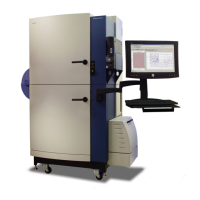Running an Experiment
194 0112-0109 H
5 times with 70% Ethanol and leave system and all tubing
dry.
6. The cell flask also must be washed each time after use:
Rinse flask, spinner, caps, and all tubing with Endotoxin-free
DI water.
Use glassware detergent safe for use with cell culture vessel.
Scrub with bottle brush and flush lines.
Rinse with Endotoxin-free DI water.
Soak flasks in Cytoclense sterilant (see Appendix D).
Rinse with Endotoxin-free DI Water.
Rinse with 70% Ethanol and leave all components to air dry
or bake in oven.
In addition, reservoir and spinner flask may be autoclaved.
Optimizing an Assay
The majority of the FLIPR
®
Tetra System assay optimization is related
to cell treatment prior to and during the assay. Cell and assay
conditions that should be checked are listed below.
Cell Culture
Conditions to check:
• Cell passage number.
• Cell growth conditions, for example confluency in flasks and/or
in wells.
• Expression induction time for transfected cells—concentration of
selection antibiotics and overall cell viability.
Cell Seeding
Conditions to check:
• Seeding density. Do not allow cells to become over-confluent.
• Type of black, clear-bottom white or clear plate.
• Volume of growth medium in each well.
• Growth medium replacement during seeding period.
Note: Please note that both the Cell Reservoir and the flask are
autoclavable.

